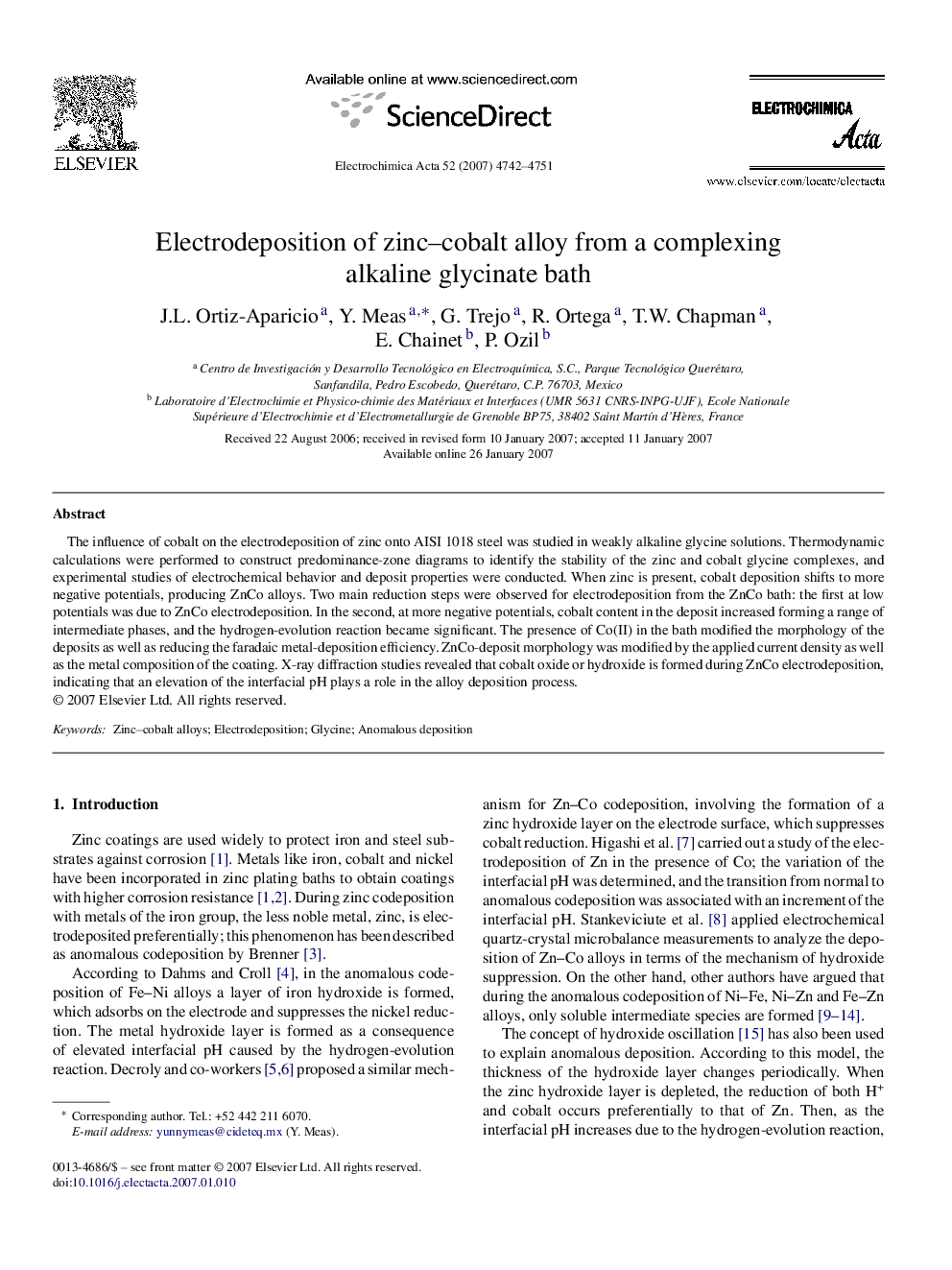| Article ID | Journal | Published Year | Pages | File Type |
|---|---|---|---|---|
| 194571 | Electrochimica Acta | 2007 | 10 Pages |
The influence of cobalt on the electrodeposition of zinc onto AISI 1018 steel was studied in weakly alkaline glycine solutions. Thermodynamic calculations were performed to construct predominance-zone diagrams to identify the stability of the zinc and cobalt glycine complexes, and experimental studies of electrochemical behavior and deposit properties were conducted. When zinc is present, cobalt deposition shifts to more negative potentials, producing ZnCo alloys. Two main reduction steps were observed for electrodeposition from the ZnCo bath: the first at low potentials was due to ZnCo electrodeposition. In the second, at more negative potentials, cobalt content in the deposit increased forming a range of intermediate phases, and the hydrogen-evolution reaction became significant. The presence of Co(II) in the bath modified the morphology of the deposits as well as reducing the faradaic metal-deposition efficiency. ZnCo-deposit morphology was modified by the applied current density as well as the metal composition of the coating. X-ray diffraction studies revealed that cobalt oxide or hydroxide is formed during ZnCo electrodeposition, indicating that an elevation of the interfacial pH plays a role in the alloy deposition process.
